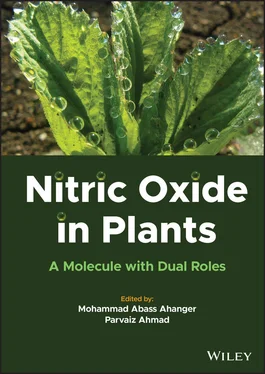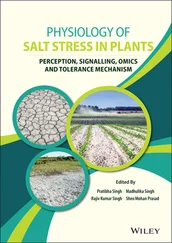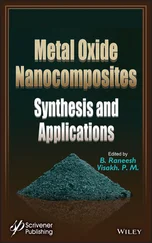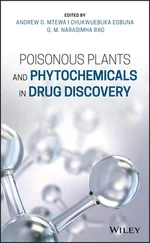Nitric Oxide in Plants
Здесь есть возможность читать онлайн «Nitric Oxide in Plants» — ознакомительный отрывок электронной книги совершенно бесплатно, а после прочтения отрывка купить полную версию. В некоторых случаях можно слушать аудио, скачать через торрент в формате fb2 и присутствует краткое содержание. Жанр: unrecognised, на английском языке. Описание произведения, (предисловие) а так же отзывы посетителей доступны на портале библиотеки ЛибКат.
- Название:Nitric Oxide in Plants
- Автор:
- Жанр:
- Год:неизвестен
- ISBN:нет данных
- Рейтинг книги:5 / 5. Голосов: 1
-
Избранное:Добавить в избранное
- Отзывы:
-
Ваша оценка:
- 100
- 1
- 2
- 3
- 4
- 5
Nitric Oxide in Plants: краткое содержание, описание и аннотация
Предлагаем к чтению аннотацию, описание, краткое содержание или предисловие (зависит от того, что написал сам автор книги «Nitric Oxide in Plants»). Если вы не нашли необходимую информацию о книге — напишите в комментариях, мы постараемся отыскать её.
Examines the beneficial roles of nitric oxide in growth and stress tolerance regulation through its involvement in tolerance mechanisms Nitric Oxide in Plants: A Molecule with Dual Roles
Nitric Oxide in Plants: A Molecule with Dual Roles
Nitric Oxide in Plants — читать онлайн ознакомительный отрывок
Ниже представлен текст книги, разбитый по страницам. Система сохранения места последней прочитанной страницы, позволяет с удобством читать онлайн бесплатно книгу «Nitric Oxide in Plants», без необходимости каждый раз заново искать на чём Вы остановились. Поставьте закладку, и сможете в любой момент перейти на страницу, на которой закончили чтение.
Интервал:
Закладка:
Table 1.1 The physiological role of NO in plants under abiotic stress.
| Plant species | Stressors | Physiological role | Reference |
|---|---|---|---|
| Wheat | Drought | Enhanced drought tolerance | Garcia-Mata and Lamattina 2001 |
| Alianthus altissima | Drought | Enhanced antioxidant defense mechanism, proline and osmolyte metabolism | Filippou et al. 2014 |
| Wheat | Drought | Enhanced seedling growth, high relative water content, mitigation of oxidative stress | Tian and Lei 2006 |
| Crambe abyssinica | Drought | Enhanced NR activity and suppressed ROS and malondialdehyde content | Batista et al. 2018 |
| Arabidopsis | Drought | Early drought responsive processes along with translational and transcriptional reprogramming | Ederli et al. 2019 |
| Bean | UV-B radiation | Decreased H 2O 2content, enhanced leaf growth, elevated antioxidant enzyme activity | Shi et al. 2005 |
| Alfalfa | Salinity | Enhanced plant growth and seed germination | Wang and Han 2007 |
| Chickpea | Salinity | Stimulates plant development and antioxidant enzyme activity | Ahmad et al. 2016 |
| Avicennia marina | Salinity | Enhanced photosynthetic activity | Shen et al. 2018 |
| Zea mays | Salinity | Enhanced activity of tonoplast H +- ATPase and gene for Na+/H+ antiporter | Zhang et al. 2006 |
| Cucumis sativus | Salinity | Spermidine accumulation has increased | Fan et al. 2013a |
| Sunflower | Salinity | Seedling growth is improved, and antioxidant activity is increased and reduced ROS formation | Kaur and Bhatia 2016; Arora and Bhatia 2017 |
| Jatropha | Salinity | Improved seedling growth with less oxidative stress and lower toxic ion deposition | Gadelha et al. 2017 |
| Crocus sativus | Salinity | Increased growth due to osmolyte accumulation and antioxidant enzyme activity, as well as increased secondary metabolite synthesis | Babaei et al. 2020 |
| Pea | Salinity | Enhanced chlorophyll content, nutrient uptake, and antioxidant enzyme activity | Dadasoghi et al. 2020 |
| Mustard | Salinity | Increased synthesis of antioxidant enzymes, enzymes for N metabolism, photosynthesis and respiration, decreased H 2O 2, MDA content, and PCD | Sami et al. 2021 |
| Vigna radiata | Salinity | Increased activity of proline, total amino acids, reducing sugars, modulates antioxidant enzyme activities, physiological traits | Roychoudhary et al. 2021 |
| Tomato | Salinity | Enhanced activities of NO and ROS | Liu et al. 2015a |
| Spinach | Salinity | Enhanced secondary metabolites and activity of antioxidant enzymes | Du et al. 2015 |
| Oryza sativa | As toxicity | Enhanced root growth and formation, reduced ROS generation, and As accumulation | Kushwaha et al. 2019 |
| Arachis hypogea | Cd toxicity | Increased antioxidant enzyme activities, reduced ROS and Cd accumulation | Yuanjie et al. 2019 |
| Arabidopsis | Cu toxicity | Improved cell viability | Peto et al. 2013 |
| Tomato | Cd toxicity | Enhanced water uptake, reduced Cd uptake and oxidative damage | Ahmad et al. 2018 |
| Cowpea, rye grass | Al toxicity | Enhanced chlorophyll content, antioxidant enzyme activities | Khairy et al. 2016; Sadeghipour 2016 |
| Lablab purpureus L. | High temperature | Reduced lipid peroxidation and increased antioxidant activity, both enzymatic and nonenzymatic | Rai et al. 2018 |
| Soybean | High temperature | Modulates activity of ascorbate peroxidase and peroxidase, reduced lipid peroxidation | Vital et al. 2019 |
| Tomato | Low temperature | Enhanced germination, seedling root and shoot length, sugar content | Amooaghaie and Nikzad 2013 |
| Juglans regia | Chilling stress | Enhanced chlorophyll, glutathione, and sugar content, reduced lipid peroxidation | Dong et al. 2018 |
| Brassica | Herbicidal toxicity | Increase in NO content, low ROS formation, improved antioxidant activities | Hasanuzzman et al. 2018 |
1.5 NO and Gene Regulation in Plants
The involvement of NO in plant signaling pathways is well recognized, but it is necessary to decipher the NO signaling routes, its targets, and its inductive or repressive effects on gene expression levels. Polverari et al. (2003) investigated the NO-induced changes in expression profiles of 2500 A. thaliana transcripts and discovered NO-induced alterations in 120 transcripts. The comparison of 71 differentially expressed complementary DNAs with microarray data revealed that the majority of NO-regulated genes are also impacted by other biotic and abiotic stress situations. In addition, Polverari et al. (2003) discovered that NO generated several plant defense response modifying transcription factors such as WRKYs, EREBPs (ethylene responsive element binding proteins), numerous zinc finger proteins, and dehydration responsive element binding proteins (DREB1 and DREB 2). NO donors were administered to tobacco plants or cell suspension cultures, which promoted the expression of defense-related genes PAL and PR1. These are indicators for phenyl propanoid synthesis and SA-mediated signaling, respectively, and are encoded by cryptography. Each of these genes plays a significant role in disease resistance (Delledonne et al. 1998; Durner et al. 1998).
1.6 Conclusions and Future Prospects
Nitric oxide is a dynamic molecule that performs a variety of physiological functions in both plants and animals. NO signaling plays a part in an array of plant biological functions, growth and developmental patterns, and abiotic and biotic stress tolerance. NO biosynthesis involves a number of complex mechanisms, including both enzymatic and nonenzymatic processes. It is necessary to conduct research on the substrates and inhibitors of the NO synthase enzyme, as well as its possible action on plants, in order to identify NO-generating enzymes. The association of NO with secondary signaling molecules as well as various phytohormones, and their possible mechanisms and pathways, need to be investigated further.
Future research should focus on the spatial and temporal distribution of NO in plants, as well as its intercellular and intracellular effects. In the future, the role of S -nitrosylation in the plant system and in ABA during the NO signaling mechanism must be recognized. Although the journey of NO research has been pushed back over the past few decades, a path forward must still be explored. Agriculture’s future requires effective research on the role of NO in increasing crop productivity and balancing ecological sustainability. The role of the NO and RNS-derived family in plant biology is being studied extensively. Elucidation of the role of NO in plant growth, seed germination, antioxidant defense mechanisms, postharvest harvest management, and the ripening phenomenon will open the door for future NO signaling research. As a result, much more research activity in NO studies is required to explore nitric oxide-mediated responses in the plant kingdom, as NO research opportunities are limitless and endless.
Читать дальшеИнтервал:
Закладка:
Похожие книги на «Nitric Oxide in Plants»
Представляем Вашему вниманию похожие книги на «Nitric Oxide in Plants» списком для выбора. Мы отобрали схожую по названию и смыслу литературу в надежде предоставить читателям больше вариантов отыскать новые, интересные, ещё непрочитанные произведения.
Обсуждение, отзывы о книге «Nitric Oxide in Plants» и просто собственные мнения читателей. Оставьте ваши комментарии, напишите, что Вы думаете о произведении, его смысле или главных героях. Укажите что конкретно понравилось, а что нет, и почему Вы так считаете.












